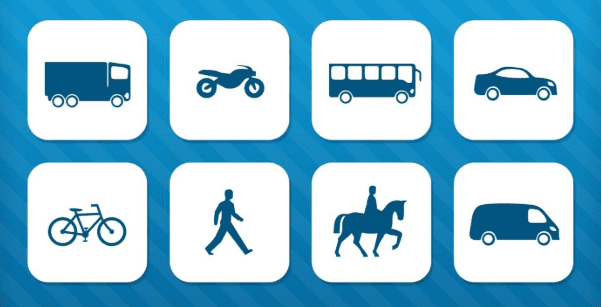The Highway Code - driving and cycling

The Highway Code applies to all road users. Rules of the Highway Code using “must/must not” are legal requirements. You are committing a criminal offence if you do not follow these.
Rules using “should/should not” or “do/do not” are advisory, but a failure to comply with them may be used in evidence in court proceedings against you under road traffic legislation.
The Highway Code was updated in January 2022. Among the key updates were the introduction of a hierarchy of road users and guidance on when cyclists are advised to cycle in the middle of the lane.
Hierarchy of road users
The Code explains the hierarchy of road users is “a concept that places those road users most at risk in the event of a collision at the top of the hierarchy. The hierarchy does not remove the need for everyone to behave responsibly.
The road users most likely to be injured in the event of a collision are pedestrians, cyclists, horse riders and motorcyclists, with children, older adults and disabled people being more at risk.”
People driving cars have a responsibility to reduce danger to people on motorbikes, horse riders, people on bikes and pedestrians. People riding bikes have a responsibility to reduce danger to pedestrians.
Overtaking Cyclists (Rules 211-215)
Give cyclists at least as much room as you would when overtaking a car. You should leave at least 1.5 metres when overtaking cyclists at speeds of up to 30mph, and give them more space when overtaking at higher speeds.
You should wait behind the cyclist, and not overtake if it is unsafe or not possible to meet these clearances.
Remember – leave space for a life
Where should cyclists be on the road? (Rule 72)
This was a key update in the January 2022 version of the Code. The rule relates to the position cyclists are permitted to take on the road.
The Code says there are two basic positions cyclists should adopt depending on the situation. The am is to improve road safety for everyone:
- Cycling in the centre of the lane (not ‘the road’), to make yourself as visible as possible, is advised in certain situations (for example, on quiet roads, in slow-moving traffic and at the approach to junctions)
- Cycling at least 0.5 metres away from the kerb edge (and further where it is safer) when riding on busy roads with vehicles moving faster than them.
Can cyclists ride side by side? (Rule 66)
There has never been a rule against riding ‘two abreast’. The updated rule makes it clearer by saying cyclists can ride two abreast and that “it can be safer to do so.”
Cyclists should be aware of drivers behind them and allow them to overtake by, for example, moving to single file or stopping if it is safe.
Using cycle lanes is not mandatory (Rule 61)
The January 2022 update clarifies the position on using cycle lanes (the Code has never made the use of cycle lanes mandatory). Rule 61 now says cycle lanes can be used where they make your journey safer and easier but cyclists “may exercise their judgement and are not obliged to use them.”












